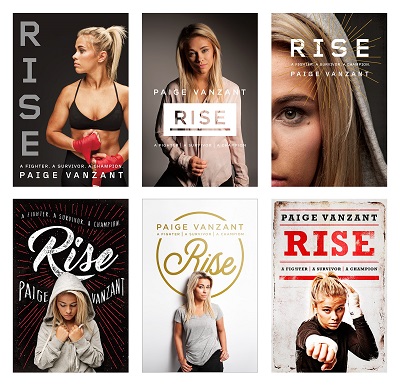PUBLISHED JULY/AUGUST 2019
by Torrey Sharp, Principal, Faceout Studio --
 Torrey Sharp
Torrey SharpThe right design process lays the appropriate foundation for designers to flourish and problems to be solved effectively.
We all respond favorably to products and services that are well designed and deliver on their promises. We like products that work as advertised. We like it when our needs are met as expected. The smartest companies understand that design is not just what we do with products to make them look good. Design is about "experience." To this end, every touch point with consumers and buyers needs to be well thought out and intentionally designed. In the book,
Do You Matter, authors Robert Brunner and Stewart Emery refer to this as the customer experience supply chain. They state: "Design is the overt, thoughtful development of the interaction points between you and your customer. Effective design establishes the emotional relationship one develops with a brand through the total experience."

As we explore how Brunner and Emery's observations can be effectively carried out within the design process, let's back up for a moment and explore the two necessary elements in marrying theory to application. How does a publisher design products in the first place that maximize the right touch points with buyers and consumers? How do great book covers get produced? Two things are needed: a great design team and a great design process. Naturally, a great process does not guarantee perfect outcomes. Talented designers remain vital to the equation. However, the right process lays the appropriate foundation for designers to flourish and problems to be solved effectively. In this article, I'll focus on some process ideas that have proven to yield positive results.
Every Department Matters
First of all, every department influences the design process. I am not advocating for what's commonly referred to in the industry as "design by committee." A poorly designed process (or no process at all) is what leads to all the negative associations with this term. Publishing groups that don't understand their departmental roles, necessary contributions, and the importance of timing in the design process do indeed delay the problem-solving process, cost their companies more money than necessary, and frustrate other team members. So, what is the role and contribution of each department in the design process? Below are a few ideas intended to start the conversation:
Authors are the content creators. They sit at the top of the pyramid. Publishers have nothing without the creative expressions of their authors. Authors are the most intimate with their own content. They often have ideas and opinions about cover art that need to be collected early in the process, and then curated. Most author contracts give the publisher final say on cover design. In theory, the publisher has more expertise with markets, buyers, and consumers. They deserve the right to control their investment. But no publisher wants an author unhappy with their cover. Authors need to give input into their cover strategy early on if that's important to them.
Publishers are the
content purposers. A publisher decides if an author's content is a good fit from the standpoint of shared values, culture congruity, access to the right sales channels for the book, whether the prospect for a long-term relationship exists, and, of course, whether the project will make money for both the publisher and author. Publishers inform the design process by articulating a book's purpose and related overarching goals.
The
editorial department is responsible for
content shaping. A good editor knows how to shape content to best reflect the author's voice and best reach the intended audience. They shape content in order to maximize impact, present unique content, and reflect excellence. Editors are in-house experts on the book's content. They inform the design process by highlighting the author's unique voice, key illustrations or metaphors from the text, big ideas expressed, the book's tone, and compelling reasons to buy based on the content.
The
marketing department's role is that of
content promoter. This department has the very difficult challenge of engaging the right audience at the right place and time. Well run marketing teams have a deep understanding of consumer behavior, retail and online trends, competing products, genre performance, and, generally speaking, how to cut through the noise. Marketers inform the design process through insight into the book's positioning, promotional strategy, and consumer/market data.
Sales teams are
content placers. Their role is to outsmart the competition for buy-in volume, shelf space, and sell through. Salespeople know how to anticipate and leverage relationships and opportunities. They typically know what is selling well and why. All this is vital information for the book designer. Sales departments inform the design process most by offering very practical insights on what consumers are responding to most online and on the shelves.
Lastly, the
designer is the
content packager. The principal task for art directors and designers is to assimilate and reflect the strategic objectives that satisfy the author, the publisher, the editor, the marketing team, and the sales team. No small task. But, alas, designers are problem solvers. They understand the power of visual communication and creating the right visual imprint in the mind of consumers. Great design reflects the audience, the author, the content, and the publisher meaningfully and beautifully, enabling marketing and sales to be successful.
So, when do all these departments weigh in on their respective insights, direction, and expectations? BEFORE designers start creating solutions.
The Design Brief
The design briefing process is crucial to success. Great design flows from great communication, and the best tool for organizing key department's input and the overall strategy is the design brief. The design brief needs to address several core elements, all gleaned from the author and various publishing departments, then curated by the art director. Here are the key objectives of an effective brief:
1. Identify the core message, promise, or big idea. Designers need to become as familiar with the content as possible.
2. Identify the target audience. It's hard for a designer to effectively problem solve viable solutions if the intended audience is unclear.
3. Identify how the book will be positioned in the marketplace. Designers knowing how a book will be promoted and sold helps keep the design on strategy. Understanding the genre/subgenre is crucial.
4. Identify the main tone/feel the book is seeking to convey based on the author's brand, the genre, the content of the book, the audience, etc.
5. Identify other books in the same space (competition), and also reference books that help establish the right tone and overall strategy.
6. Review any brand equity the author has in regard to size/placement/style of how their name is treated on the cover.
7. Lastly, discuss specific art direction: objectives that have to be met, anything to avoid, ideas worth exploring, and ways to make the design unique.
The role of design is simple: Catch the eye (feel), intrigue the mind (think), and command a response (act). But this cannot be done effectively without taking into account the strategic objectives of the project. The design brief holds all stakeholders accountable to a shared strategy and an efficient process. After this difficult task of collecting information and defining strategy, talented designers should have all they need to move a project forward.
Evaluating Design
Evaluating design is the last challenge in the cover design process. Without a well-drafted brief that has taken into account the input of the author and the appropriate departments/stakeholders, evaluation becomes dominated by personal preferences, instincts, or fleeting hunches. While personal reactions are in fact important indicators of how well a cover is communicating the intended message, they can't overshadow the strategic objectives outlined in the brief. These objectives need to be revisited, as they represent the framework for what will hopefully be constructive dialogue where these important topics can be covered: strategy, tone, concept, audience, and general execution of each cover concept. There are a couple things to consider in the evaluation process. One is that ideas give design weight. Explore the ideas/concepts behind each execution carefully. And secondly, when ready to provide feedback, identify the problems needing resolution versus prescribing solutions. Designers (at least the good ones) need to know where the mark was missed and be given the chance to come back to the table with new solutions versus being told which buttons to push.
So, what does this look like in real time?
In the middle of 2017, I got a call from Amanda Kain, creative director for
Hachette Books in New York. The book cover project was for
Paige VanZant, a mixed martial arts star in the UFC's flyweight division. This was Paige's first book, a
poignant memoir of a fighter who overcame sexual assault, bullying, and much more to achieve success in and out of the octagon. According to Amanda, "Paige's story is one of enormous strength and perseverance. We wanted a striking cover that would show her strength but also her vulnerability." After much planning with Amanda and her publisher, we got to work and submitted the comps (pictured above right), along with several others.
After much review, Amanda and her team (multiple departments) landed on the right cover direction. In her own words, Amanda describes the thinking that led to their decision: "The script and line art on some of the comps felt too busy to our team and got in the way of Paige's message. We much preferred the bold, simple type options with the clean layouts that let Paige's presence shine through.
[caption id="attachment_39402" align="alignright" width="400"]

Possible Covers for Paige VanZant Books. Finalized cover on the top left. All photos by
Tim VanBergen Photography , (
IG: @timvanbergen)
As we reviewed the comps, our team realized that we were all leaning toward making sure her body was revealed on the cover. Her body is incredibly strong; she's a powerhouse. The close-up of Paige was also intriguing to many in the group, and we ended up using one of those shots on the back of the jacket. The juxtaposition of the body shot on the front and the close-up on the back made for a dynamic package. The entire package came together beautifully, incorporating the type design from the front onto the front flap and the spine. Sales and marketing were very happy with the cohesive package and really felt that it pulled people in to Paige's story immediately."
This project was a good example of how great initial communication on the project's objectives led to an effective collaboration with the publisher, the photographer, and the author, ultimately leading to a cover solution that worked well for all stakeholders. Designing a solid creative process (and sticking to it), while involving the right people at the right time, will increase your odds of designing book covers that consistently reflect the content and author well, meeting the needs and hopes of your audience, and, ultimately, sell more books.